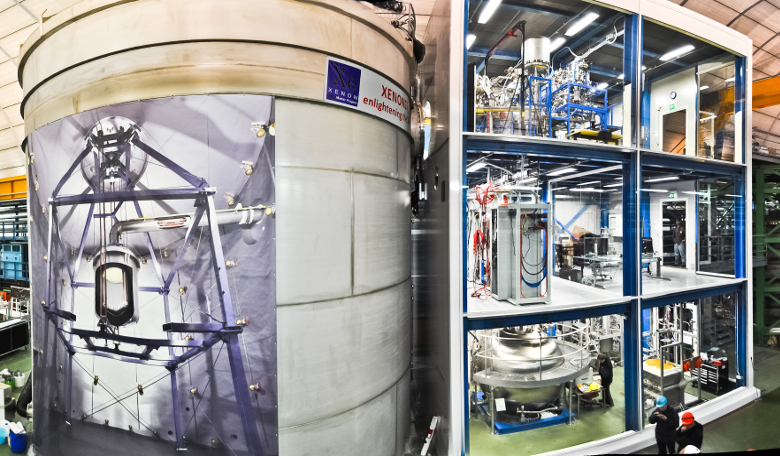Experimental data from the XENON1T dark matter detector buried deep beneath a mountain in Gran Sasso, Italy has established the most stringent limit yet on the effective size of dark matter particles – one-trillionth of one-trillionth of a centimetre squared.
The definition of dark matter to most people is that it is the stuff that makes up a lot of the Universe but no-one really knows much else about it. And that assumption still holds true today. Dark matter is estimated to make up roughly 80 percent of the mass of the Universe, however, this elusive material does not absorb, reflect or even emit light and its existence has only been inferred from the gravitational effect it seems to have on visible matter.
One of the leading contenders for what dark matter might be are WIMPS; Weakly Interacting Massive Particles. WIMPS are so prodigious that up to a billion of them are expected to pass through a one square metre patch on Earth every second. But despite their numbers, as they are not expected to exert an electromagnetic influence on normal matter their existence is still as elusive as ever.
Not put off by this seemingly hopeless search are an international collaboration of more than 165 researchers from 27 institutions across the world, who are using a 1300 kilogram vat of liquid xenon at -95°C to try and spot a rare sign that would confirm the WIMPS existence.
Known as XENON1T, it is the world’s largest and most sensitive dark matter detector and it aims to capture the tiny spark of light that is produced when a WIMP interacts with a xenon atom. Xenon has a density three times that of water, so when, or indeed if an interaction occurs it will also free a handful of electrons from the xenon atoms that will also result in a flash of light. Ultra-sensitive photodetectors housed in the cylindrical detector should then be able to simultaneously record both light signals giving the energy and 3D spatial information from the interaction on an event-by-event basis.
Although XENON1T is not the first sensitive xenon detector tucked away in the Gran Sasso Underground Laboratory (LNGS) in Italy, it is the most powerful and the collaboration were hoping to witness two interaction events in the one ton of xenon they have been monitoring for nearly a year. The results published this week however confirm that no events were detected meaning that dark matter particles must be even smaller than previously thought - as small as 4.1 x 10-47 square centimetres to be precise.
"We now have the tightest limit for what is known as 'the WIMP-nucleon cross section,' which is a measure of the effective size of dark matter, or how strongly it interacts with normal matter," said Ethan Brown, a member of the XENON Collaboration, and assistant professor of physics, applied physics, and astronomy at Rensselaer Polytechnic Institute. "With these results, we have now tested many new theoretical models of dark matter and placed the strongest constraints on these models to date."
The team hope to move forward with the experiment by implementing a new xenon solution and a new purification system to keep the xenon ‘clean.’ This will help to reduce any unwanted signals which could interfere with a true WIMP interaction.











